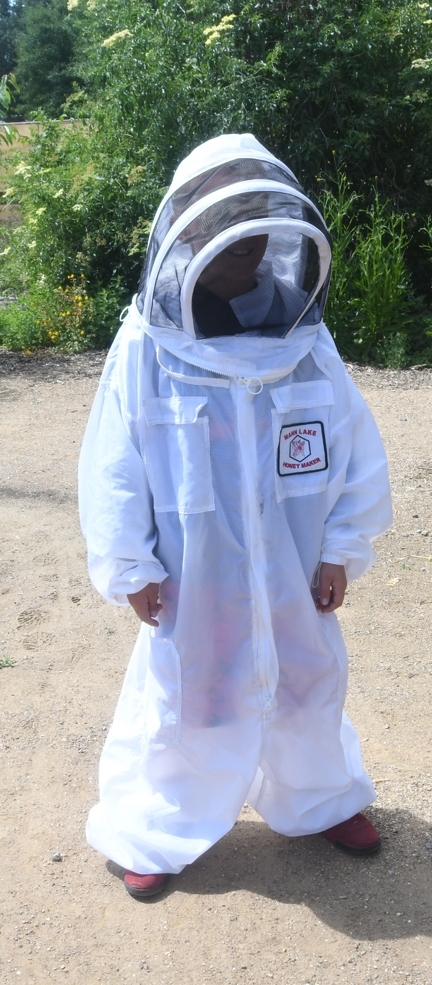
Tomorrow (Saturday, Aug. 18) is National Honey Bee Day.
A small group of beekeepers originated the observance back in 2009 to spotlight bees and beekeeping. They petitioned and obtained a proclamation from the U.S. Department of Agriculture, which set aside the fourth Saturday of August to mark the occasion.
It's important to educate the public--especially children, our next generation--about the importance of honey bees and other pollinators.
And that's just what the UC Davis Pollination Education Program is doing, thanks to California State Extension apiculturist and faculty member Elina Lastro Niño of the UC Davis Department of Entomology and Nematology.
“This program was developed to ensure that our young scientists and future voters are aware of the importance of pollinators to our food production and ecosystems," Niño related. "We are also very excited to partner with programs across the university to recruit and support UC Davis students in becoming interns and mentors for the program. This program has already generated so much excitement with the kids and we want to provide this opportunity to as many schools as possible.”
We recently watched a group of third graders from Amador County learn about honey bees and other pollinators when Nino and her colleagues hosted the youngsters in the Department of Entomology and Nematology's bee garden, the Häagen-Dazs Honey Bee Haven. A half-acre public garden installed in 2009 on Bee Biology Road, west of the central campus, it provided the perfect place for the five interactive learning stations.
Some highlights...
Laura Brutscher
Postdoctoral scholar Laura Brutscher of the Niño lab kneels by an educational beekeeping display: a beehive, a smoker, a hive tool and beekeeper protective gear. She discusses the residents of the hive: the queen, worker bees (females) and drones (males). The third-graders, sitting, standing or kneeling in the garden, listen to her wide-eyed.
“Who knows what the job of a drone is?” Brutscher asks.
A hand shoots up. “The drones protect the queen!” a boy declares.
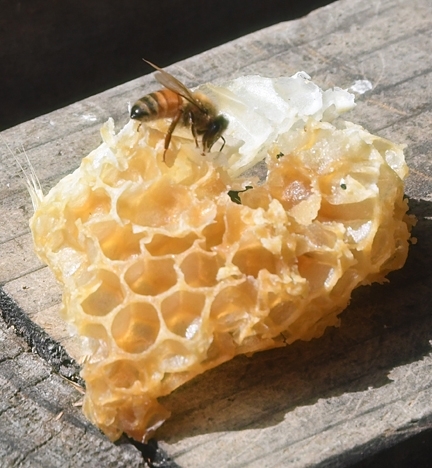
The students learn that the honey bee colony is a matriarchal society. The females do all the work, performing specific tasks with job titles such as nurse maids, nannies, royal attendants, builders, architects, foragers, dancers, honey tenders, pollen packers, propolis or "glue" specialists, air conditioning and heating technicians, guards, and undertakers. The queen can lay up to 2000 eggs a day during peak season.
The third graders then suit up, donning assorted beekeeper protective gear. They pose gleefully in oversized suits while adults on the tour--teachers, parents and mentors--photograph them.
Elina Lastro Niño
Niño, who also directs the highly successful California Master Beekeeper Program, explains pollination and how honey bees differ from such generalists as bumble bees and such specialists as squash bees. She invites the students to build their own bee, using pipe cleaners of various lengths to mimic how they are able to pollinate flowers. The youngsters also taste apples, blueberries and almonds. Honey bees, she tells them, pollinate one third of the food we eat.
Charley Nye, beekeeper and manager of the Harry H. Laidlaw Jr. Honey Bee Research Facility, zeroes in on the products of the hive. “When we see bees flying around, what are they doing there?” he asks.
“They're out gathering nectar and pollen,” responds one youngster.
“That's right,” Nye says. He then introduces them to five varietals of honey: almond, coffee, cotton, blackberry, meadowfoam.
The students and adults like the meadowfoam the best. “It tastes like cotton candy!” one girl says, slowly savoring the flavor she found reminiscent of a county fair.
Wendy Mather
Wendy Mather, California Master Beekeeper Program manager, shows the youngsters a bee vacuum device and how to catch and release bees. They examine them close-up. Others at her interactive learning station craft seed cookies, decorated pots, and planted seeds for pollinators. They also view the bee and syrphid (hover) fly specimens loaned by pollination ecologist Neal Williams, UC Davis professor of entomology. The hover fly, sometimes called a flower fly, is a major pollinator.
Another station focuses on solitary bees: leafcutter bees and blue orchard bees. The students paint nest boxes and learn how the native bees differ from honey bees. Honey bees are not natives of America; European colonists brought them to Jamestown, Virginia, in 1622. Honey bees did not arrive in California until 1853, the year a beekeeper installed colonies near San Jose.
Marcel Ramos
Marcel Ramos, lab assistant in the Elina Niño lab, opens a hive inside a netted enclosure and showed the students the queen bee, workers and drones and pulled out frames of honey.
It was indeed, a honey of a day, and the youngsters learned a lot about bees.
The event received financial support from the UC Davis College of Agricultural and Environmental Sciences Programmatic Initiative Grant, the Scott and Liberty Munson Family, and matching funds from Microsoft.
Ron Antone, chair of the Farms of Amador and an Amador County Master Gardener, coordinated the Amador County visit, which drew third-graders from four schools: 67 from Plymouth and Sutter Creek elementary and "about the same number" from Pioneer and Pine Grove elementary. “The tour was coordinated and funded by Farms of Amador,” he said. “We are also associated with the Amador County Farmers Market Association."
“The program presented by Elina and the Häagen-Dazs Honey Bee Haven team was an incredible experience for all involved: students, parents, teachers and mentors from Farms of Amador and Amador County Master Gardeners," Antone said. “I could not have imagined a more successful trip."
UC Davis Resources:
Celebrate bees on Saturday, Aug. 18: The UC Davis Department of Entomology and Nematology's bee garden, the Häagen-Dazs Honey Bee Haven, has scheduled an open house from 10 a.m. to 4 p.m., Saturday, Aug. 18. Saturday is National Honey Bee Day. The event is free and family friendly. The garden is located on Bee Biology Road, west of the central campus.
Activities, according to academic program manager Christine Casey, will include:
- Learn about how to grow healthy fruits and vegetables at home and how to encourage pollinators in the garden for best yield
- See the bees in action in our demonstration garden
- Cooking demonstration and recipe ideas
- Bee and plant experts to answer your questions
Attached Images:
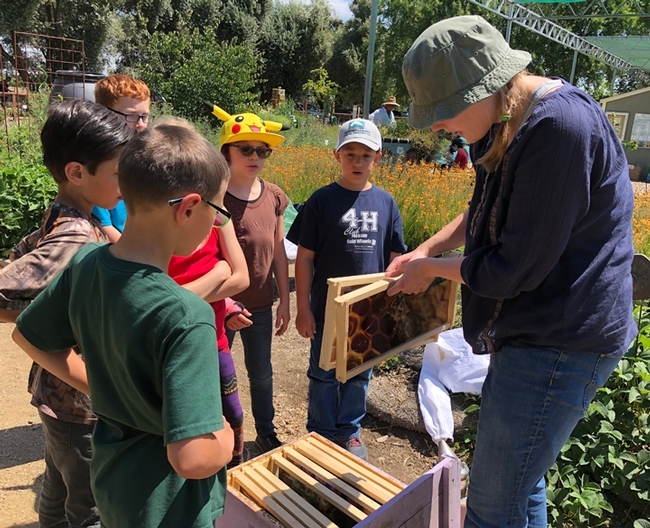
Postdoctoral scholar Laura Brutscher of the Elina Lastro Niño lab at UC Davis talks about who lives in the hive. (Photo by Kathy Keatley Garvey)
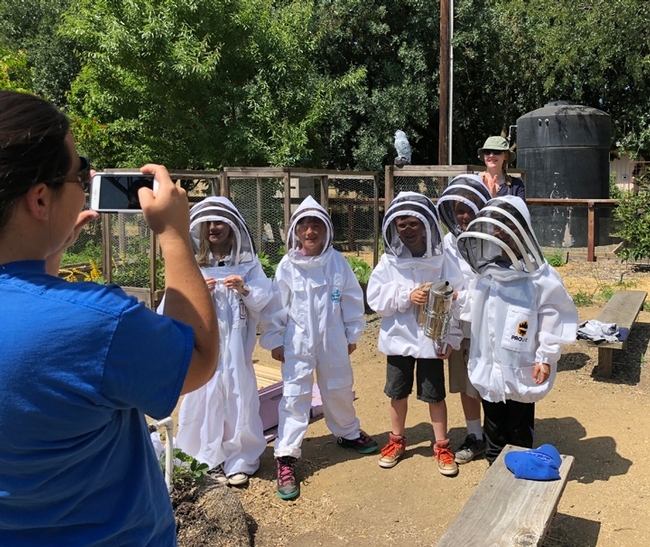
The youngsters enjoy dressing up in beekeeper protective suits and being photographed. (Photo by Kathy Keatley Garvey)
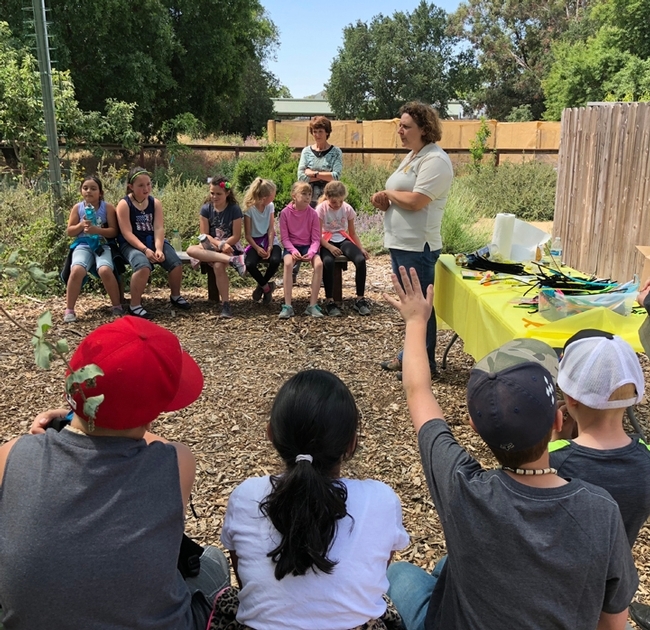
Extension apiculturist Elina Lastro Niño talks about the importance of pollination. (Photo by Kathy Keatley Garvey)
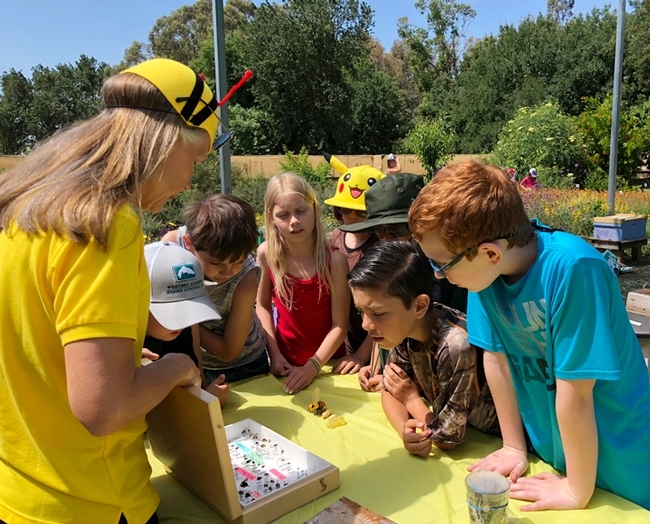
Wendy Mather of the California Master Beekeeper Program shows the youngsters bee specimens. (Photo by Kathy Keatley Garvey)
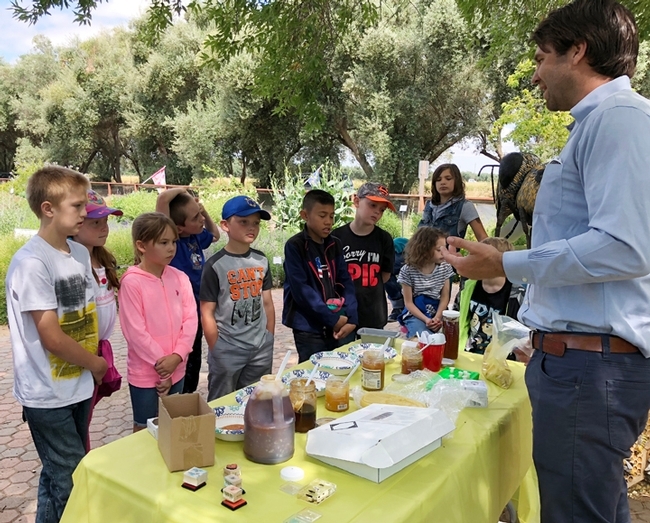
Charley Nye, manager of the Harry H. Laidlaw Jr. Honey Bee Facility, introduces the students to honey varietals. (Photo by Kathy Keatley Garvey)
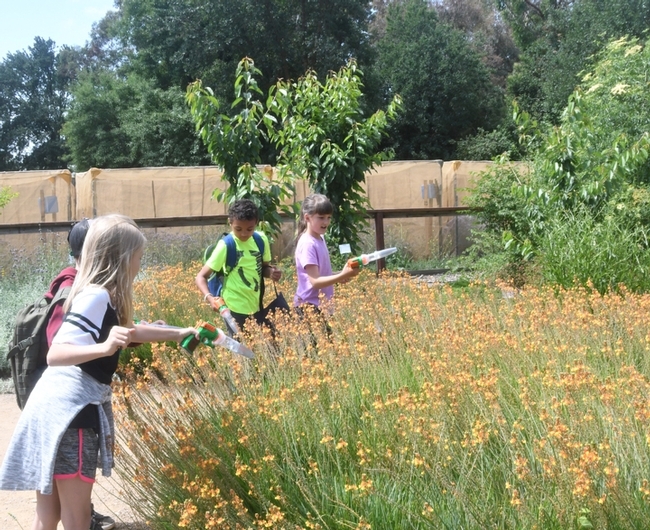
The students catch, examine and release bees with bee vacuum devices. (Photo by Kathy Keatley Garvey)
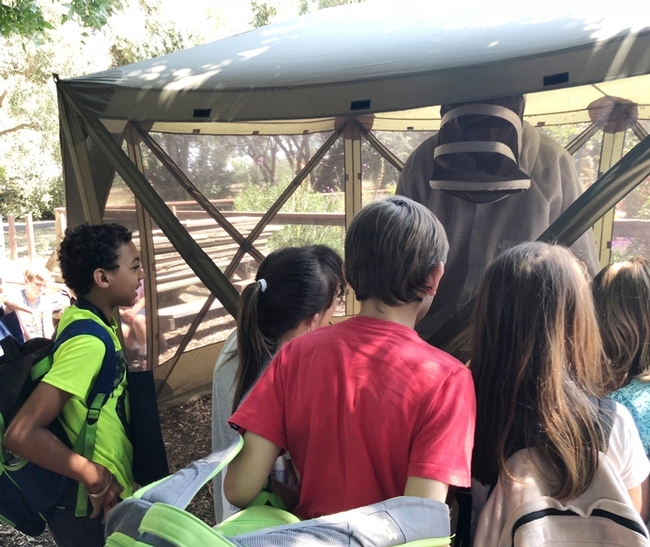
Marcel Ramos of the Niño lab opens a hive inside a netted enclosure. (Photo by Kathy Keatley Garvey)